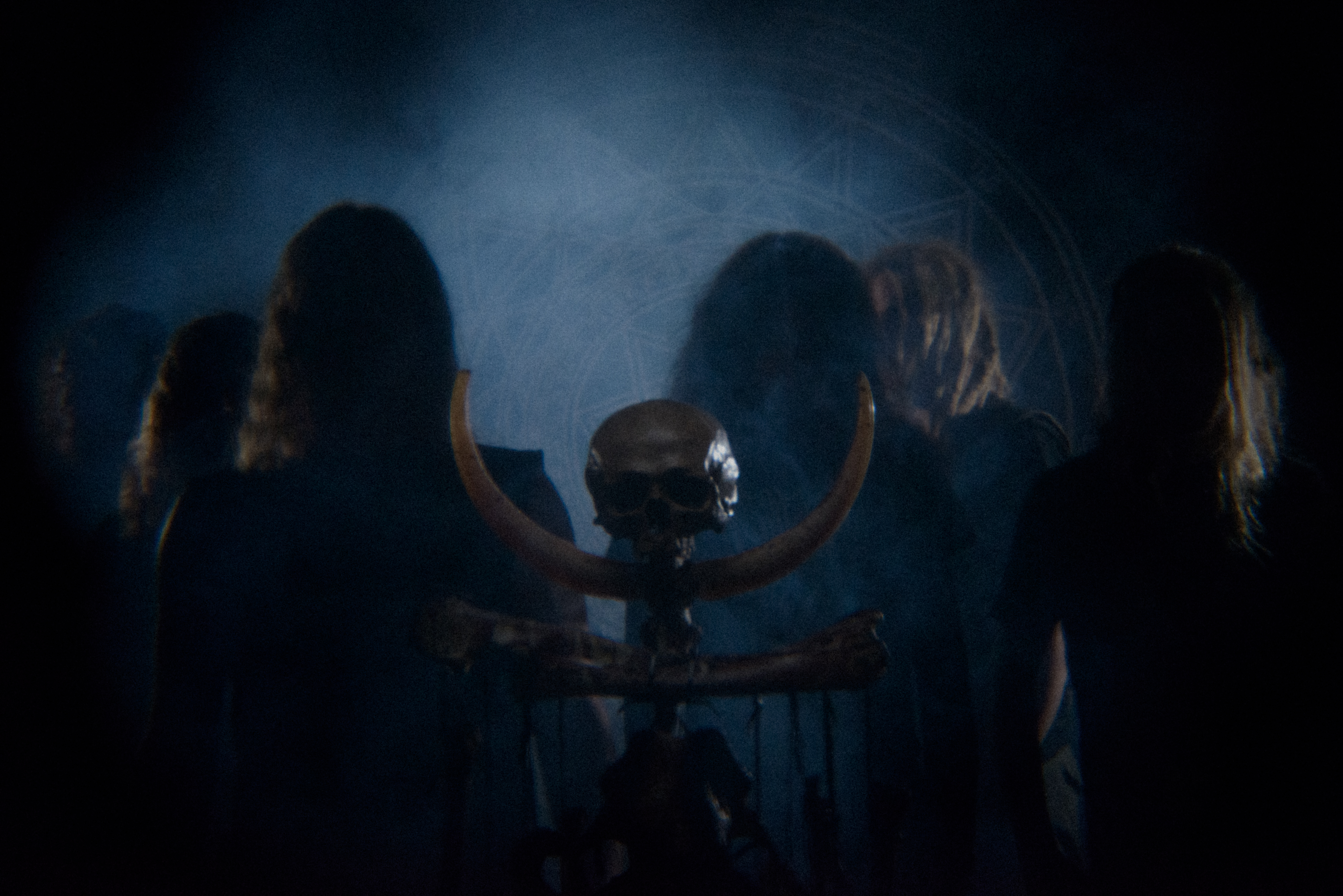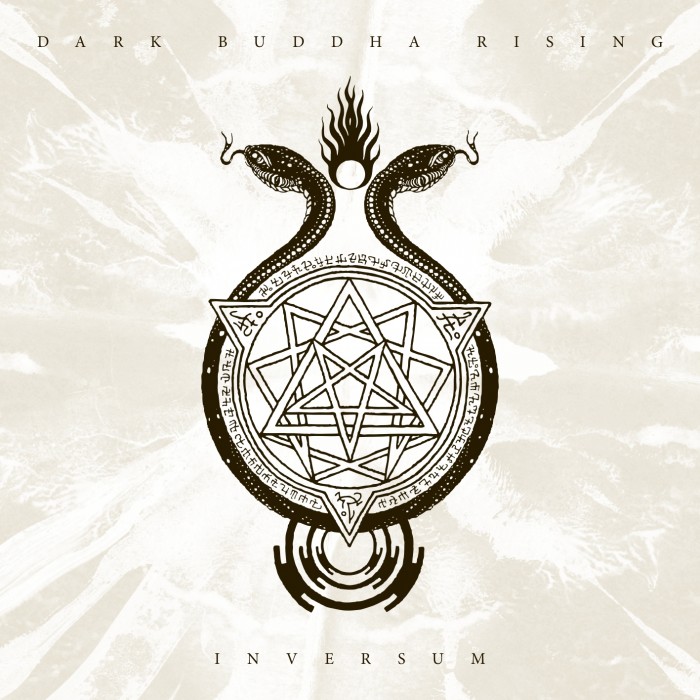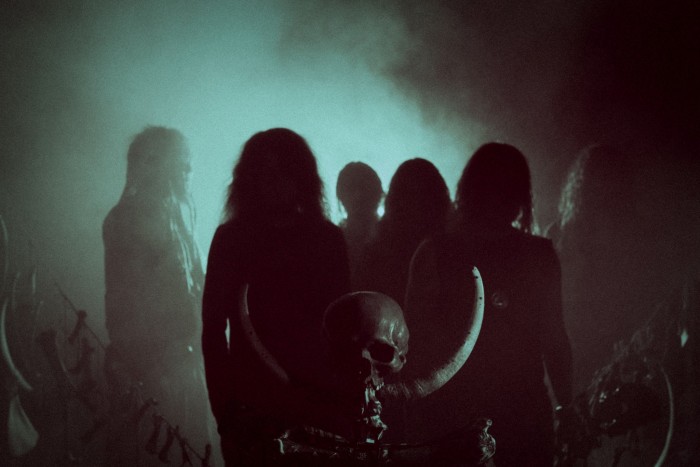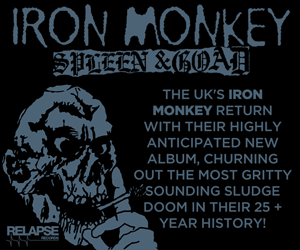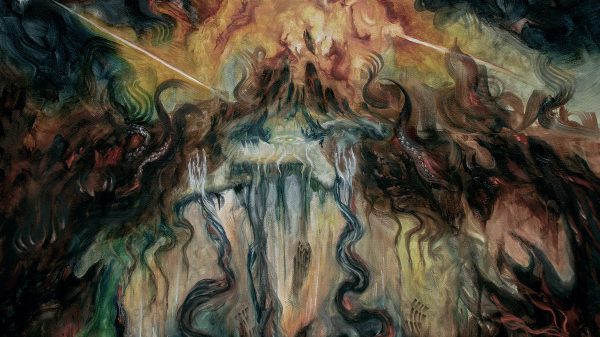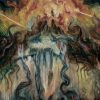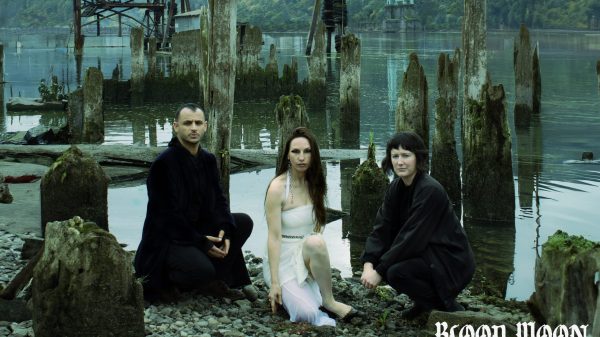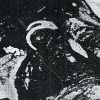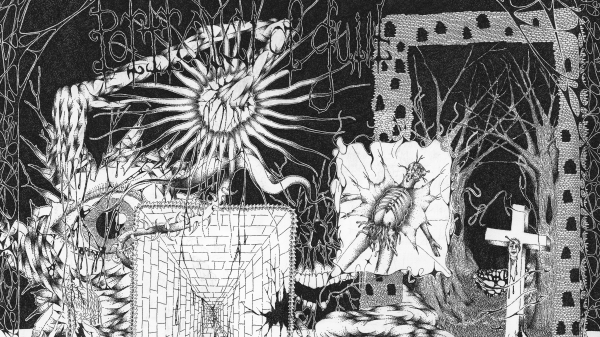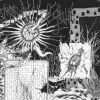One of the most impressive forces in the Finnish extreme metal scene are undoubtedly Dark Buddha Rising. The prolific ambient drone/doom/sludge act releases its sixth full-length, Inversum, which features two tremendous sonic offerings. Catching up with Vesa (guitars, vocals), we discuss the origin of Dark Buddha Rising, the themes that appear in their works, plans for what the future holds and much more.
Hey Vesa! First of all, thanks for finding the time to do this interview! It is much appreciated. Would you like to give a brief introduction to the band? As far as I know you had some line-up changes recently.
Hey. Thanks for the interest and support. Me, Jukka and Petri Rämänen decided to make music together in 2007. J. Niemi and S. Kuosmanen joined 2008, and the latter was replaced by V. Vatanen in 2013 and also J. Saarivuori joined the line-up. J.Niemi departed later the same year. After recording Inversum, M. Neuman joined the line-up because his guest vocals fitted the sound so well.
Can you give some insight into the choice of the band name? What is the signification of the Dark Buddha and how does it fit with your musical vision?
The Rämänen brothers came up with the name Rising Buddha, and so I suggested Dark Buddha Rising, because I had just discussed the idea of dark Buddha with my good friend. Rising is a process, so it fits the idea of our work. The use of dark is quite a cliché, but we didn’t think of any other that would fit. The name fits the music and lyrical inspiration, which is from Buddhism, among everything else.
Throughout the years, you had some very interesting symbolism in your recorded works. Can you explain their significance? More importantly, about the cover artwork for Inversum, which at least to me shares certain similarities with the cover of Abyssolute Transfinite. Is there a connection between the two albums?
The emblem of DBR came out of my “geometric study” of Gurdjieff’s enneagram, whose shape appealed me greatly and has been the heart of the geometric interpretation of the music and the lyrics. This applies to the Inversum album art as well. There are certain similarities to Abyssolute Transfinite, but also a reference to Dakhmandal art. There is a strong connection throughout all our album art. The music, lyrics and the art resonate with each other and provoke them to manifest into the reality. I won’t open the gates into the mental catacombs of DBR’s art. There is enough information in the albums for one to find.
Can you also shed some light on the song titles that you have chosen for the two tracks of Inversum? Using the short words “E S O” and “E X O” – are those taken from the Greek words meaning the “with-in” and the “with-out,” and how does that fall in your concept as a band?
Basically, the titles reference to two processes, inner and outer, or personal and universal. It falls just perfectly.
It has also been stated that with Inversum, Dark Buddha Rising are entering a different cycle of their existence. Can you explain more about the previous cycles that the band has gone through and what can we expect from this new cycle?
Let’s say that if you look at our three previous albums and three EPs, their album art and the concept is quite obvious. I can’t say what to expect, because I don’t know what there is to become. These things more or less just emerge.
Where do you draw influence from? Apart from just musically, what is it that has had an impact on your concept as a band?
I think our main influence is our existence in this universe and the absurdity of it. Also, the absurdity is inevitable for matter to accumulate, so that there is a possibility for us to exist and search for the meaning of everything and nothing. The altered states of consciousness are influences for us. The reality can be viewed from different individual perspectives and also from a universal perspective. There is no beginning or end, just countless processes within the great current of energy. DBR is a process that we are drawn to in order for it to manifest into this reality.
Inversum is the sixth album you’ve released in a span of eight years. How would you describe the evolution of the band throughout this time?
The evolution has been a quite stable progression to the point of time that we are now. I think we have always kept our integrity and done things for our selfish reasons. A wise man once said: “This thing is basically based on the fact that we do what we do.” That pretty much sums up everything for DBR as well. As we have done a record, we have always thought about how we will top it with the next one. Every time we have done it, or at least we think so, and that is the main thing. Also, we see the weaknesses of every record and try to evolve past them. The vision and guidance has been quite strong from the beginning.
Inversum is also being released through Neurot Recordings. How is it working with the label for the new album and are you happy overall with the experience so far? You had recently completed a tour with Neurosis, if I am not mistaken. Was the connection initiated then? And how was it touring with them?
It has been great indeed. Yes, we had a small European tour with them in summer 2013. We felt very welcomed on the tour. There was also a strong connection between us. For me, personally, it was the best tour so far. I have great respect for their art and based on the conversations with Steve and Scott, the feeling is mutual. Their work as a band and a label has been very inspiring for us from the beginning and to be part of that is an honour.
The album was recorded in the practice/recording space that you use with Oranssi Pazuzu. How was the overall experience of recording the album there? Did you feel that you had certain advantages over recording in a commercial studio?
Actually, besides Dakhmandal, we have done almost all our recordings there by ourselves, but mixed by our friend. We built a control room there, so we recorded and mixed Inversum by ourselves just to evolve and learn. It’s important for us that we do things in our way and experiment with different ideas. It’s a very inspiring space and we needed to do this there. It’s good that there is a loose schedule and not much expense. Also, it is an advantage and disadvantage that there are no professionals to confuse us.
Your sound is not the most straightforward out there. How important is it to get the right production for your music?
The main elements of our sound are the building tensions and release points, fitting all the pieces in the right places is a very important factor. Mostly everything is recorded live, so we have to compromise a little bit. I think the overall feeling and tension are more important than high-end produced sound. We do our best production-wise and recognize deficiencies, which forces us to evolve.
As far as I know, you recorded the album yourselves. Are any of you a sound engineer and took the helm in this process, or was it more of a collaborate endeavour?
There are no real professionals among us, but J. Saarivuori was the “main” engineer, V. Vatanen was there to say what to try with the sounds and the rest of us we there to tell what needed to be done. So it is collaboration, but with us all having our own features.
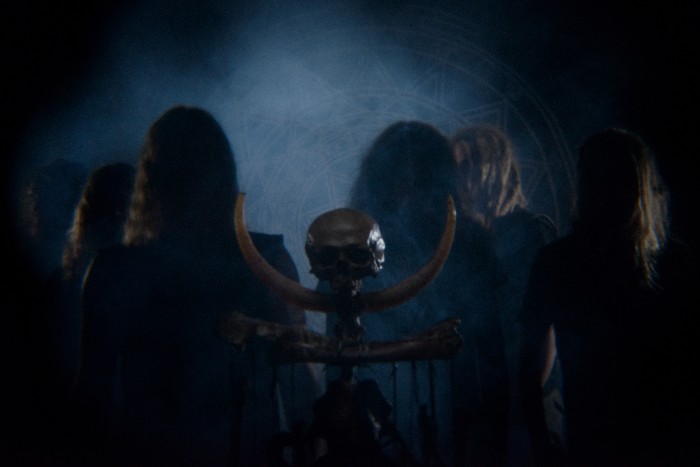
The Finnish extreme metal scene seems to be going really well, with interesting acts such as Oranssi Pazuzu, Abyssion, Atomikyla. Is there a sense of community with the other bands. And are there any more interesting groups that we should have a listen to?
Sink, Fleshpress, Hebosagil and Katakombi to name a few. Finland is a small country, so there is some sense of community. With the extreme and sinister world that these bands represent, the people in them have tendencies not to be so social, you know – not to mention, with a Finnish way of communicating. But when we see each other at gigs it’s always good time.
Are you guys involved in any other bands or projects that you want to mention? If so, how do you manage balancing the time between Dark Buddha Rising and any other projects?
Mr. Peter Hayden, of course. Also, our vocalist has a new project called Overdose Support. We have to schedule and prioritize the obligations so that everything can be done in best possible way. Having so many things going on is lot of work, but it also feels quite natural and not forced to create music together.
I got word that one of your members is actually building guitar pedals. Do you make use of these in Dark Buddha Rising?
J. Saarivuori has made me couple of effect pedals back in the days that are still in use and I did one for myself as well, which is one of the main fuzz pedals I use. Also, we built a 6×12 guitar cabinet, which is the coolest thing ever. It is very interesting to do things yourself and we want to do it as much as possible.
I have heard that you are very productive in terms of new music. Is there any material that you are currently working on for further releases?
The new Atomikylä and Mr. Peter Hayden albums are basically recorded and in a process of mixing.
Do you have any plans for future gigs?
We have gigs in Finland after the release of Inversum and a spring European tour is being booked.

